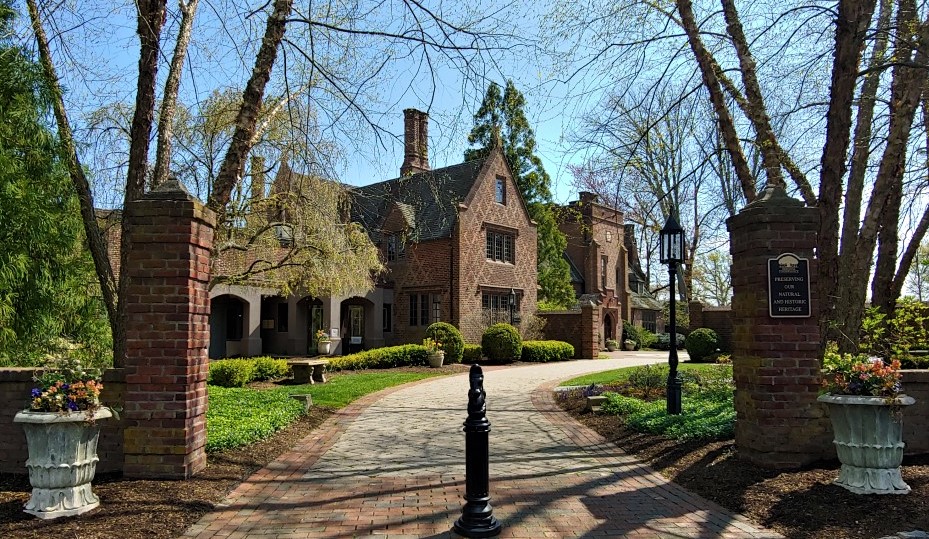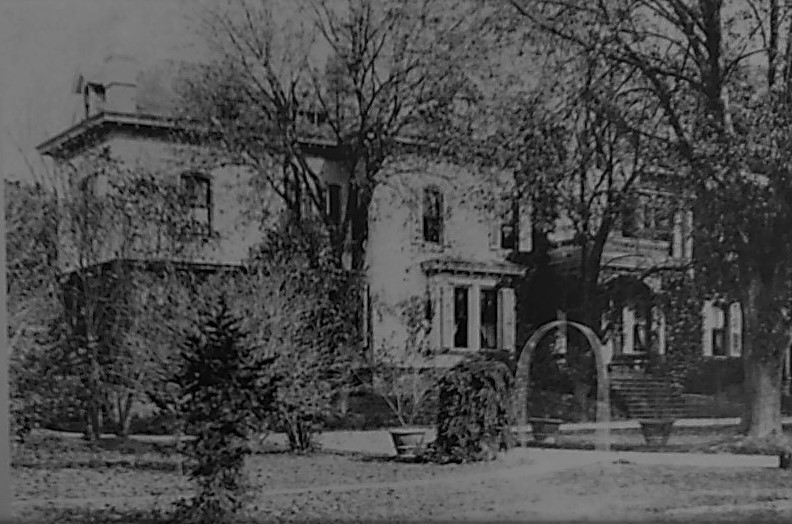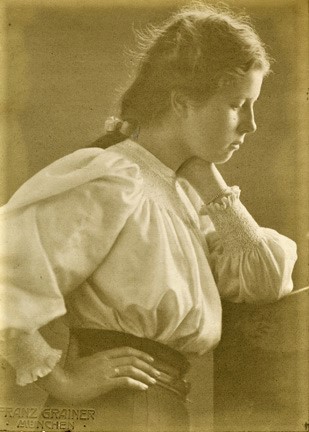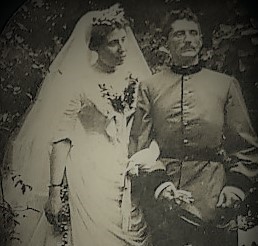Lela Mercer was a European baroness whose brothers made Doylestown famous.
Last fall I toured the Aldie Mansion in Doylestown to soak up the legacy of the Mercer family. Lingering beside a memorial wall near the main entrance, I pondered brief descriptions of the illustrious Mercer siblings who grew up on the estate. Henry was the oldest and best known for building nearby Fonthill Castle, Moravian Tile Works and 9-story Mercer Museum. There’s William, a noteworthy sculptor who got in trouble with “Harry” for tearing down the original Aldie villa in 1927 to replace it with today’s larger mansion. As for sister Lela, she married a European baron in old Aldie’s garden and moved to his principality in Austria. Unlike her two brothers, her picture does not adorn the wall. Just her name and nothing else. It got me to wondering: Who was Baroness Elizabeth “Lela” Mercer Fidler von Isarborn?

Lela was born in 1858 to Mary Mercer, daughter of county Judge Henry Mercer and wife Rebecca. Lela was the middle child. Harry was two years older; Bill six years younger. Lela was a nickname after beloved aunt Elizabeth “Lela” Mercer. She was Mary’s sister who married into the ultra-rich Lawrence family of Boston. After the premature death of her husband – London attache T. Bigelow Lawrence – she used her wealth to build an Italian villa for Mary and her children on 29 acres on the edge of Doylestown. She called it Aldie after the Mercer ancestral home in Scotland.

Aunt Lela, who was childless, shared her riches with all Mary’s kids including cost-free Harvard educations for both boys. The siblings traveled extensively in Europe, often with their aunt who immersed them in art, foreign languages and history. In her mid-20s, Lela accompanied her aunt on a typical tour. “From London, they all went to Paris in time to see the horse chestnut trees in bloom, staying as usual at the Hotel Meurice,” according to biographer Helen Hartman Gimmel. “Naturally there was shopping at Worth; ‘The Magic Flute’ and ‘Les Contest d’Hoffman’ at the Opera Comique; the circus at the Hippodrome. Driving through the disreputable old Latin Quarter one afternoon, they found it patrolled by police five abreast. Lela was impressed that her Aunt Lela was totally unafraid, even enjoying the potentially dangerous situation.”
Lela Lawrence was a bon vivant on both sides of the Atlantic, a constant source of gossip and newspaper commentary in London and Washington where she lived. Harry, Bill and young Lela joined her at governmental receptions, weddings and balls in the capital where they socialized with the rich and famous.
Harry spent much time abroad studying archeology and architecture. When his sister turned 28 and was visiting England, he invited her to join him for a leisurely voyage by raft and houseboat down the Danube River in Germany. The journey was a delight. They spent the winter at a former cloister near Vienna where they learned Austrian dances, enjoyed entertainers strumming zithers and guitars in beer halls, and participated in wine making.
One day while strolling along the river, Lela encountered an officer on leave from the Austrian Army. His form-fitting uniform with turquoise embellishments caught her attention. He introduced himself as Ober-Lieutenant Baron Hubert Fidler von Isarborn. It was a kinetic moment. Lela discovered he was a gifted singer who played the zither. He also was an accomplished artist. The two became inseparable. When Lela expressed admiration of an Austrian walking cane made from rosewood, he climbed a nearby hill, cut down a rosewood trunk and carved it into a beautiful hiking cane for her. As the days rolled on, he taught Lela better German; she instructed him in English. Their blossoming romance made some worry he had no financial prospects. But the young lovers had Aunt Lela’s largesse to fall back on that she freely offered.
The following summer – 1888 – the baron arrived in Doylestown to marry Lela. A Catholic priest conducted the ceremony in mid-July in Aldie’s ornamental garden framed by large terra cotta jars, Corinthian pillars, floral cuttings. The local newspaper reported 40 intimate friends and relatives in attendance. “The bride wore white silk, the groom his full army regalia, and Hassler’s orchestra of Philadelphia provided the music.”

After an extended honeymoon at Aunt Lela’s cottage in York Harbor, Maine, the happy couple sailed for Austria through the Mediterranean with stopover in Spain so Hubert could sketch Alhambra, the famous fortress in Granada. Five years later Lela gave birth to daughter Walpurga. She would be the only surviving heir of the brother-sister trio. Henry was a life-long bachelor; William’s twin sons died in infancy. Lela, who passed away in 1919 after facing much hardship during World War I, lived long enough to see her daughter marry Austrian Baron Edouard von Friesen. Walpurga later give birth to son Bernard whose progeny lives on today.
Sources include “EL: The Bread Box Papers. A Biography of Elizabeth Chapman Lawrence” by Helen Hartman Gemmill; copies of letters of Lela Mercer at the Spruance Library in the Mercer Museum, Doylestown; “Henry Chapman Mercer: An Annotated Chronology” published by the Bucks County Historical Society in 1989, and the Doylestown Democrat’s coverage of Lela’s wedding published on July 31, 1888.

